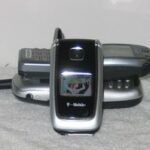Money orders should to be valued more highly than they are because they offer some greater advantages than the usual checking account. Money orders are prepaid and therefore overdraft fees are out of the question.
Your first step would be to find a bank or a place of business that sells money orders. You can always buy a money order from a bank or a post office. However, most quick shop stores and even grocery stores now sell money orders.
The next step would be to tell the clerk that is waiting on you the amount you wish to purchase. The amount of money you are purchasing will then be imprinted by a machine onto the money order. The money order is printed on paper and will come with a carbon copy that you can keep for your records.
Make certain you bring a pen with you because you will need to fill out the money order and you want to be prepared to complete your transaction.
Now that you have a pen you need to write down the name of the person or the institution you need to pay the money to and a blank space will be provided on the money order given to you saying, “Pay to”, “Pay to the order of” or “Payee. When you have found the space you can fill in the name of the organization to which the money is going. In the same space also write down their account number. This step is the most important one as a money order that does not contain this information can be easily converted to cash money by anyone that finds it.
In the next step, you will have to put your signature on the money order. Some money orders will provide you a space for signing it which typically says, “Purchaser’s Signature”, “Purchaser, Signer for Drawer” or “Signature”. If no such space is provided you don’t have to worry about this step. Nevertheless, you must keep in mind that you should not sign the back of the money order because this is where the Payee’s signature is required. There will be a space on the money order marked – “From”, “Purchaser”, “Sender” or “Remitter” and this is where you need to fill in your name. This is how you will be recognized for the money order and in this space you will have to fill in your other necessary details like your account number so that your payment will be credited to your account.
You will now have to write down your residence address under the heading of purchaser’s address. Do not write your recipient’s address in this space. Even if the money order has a label of “Address,” instead of “Purchaser’s Address” write in your address.
A segment of the money order will contain the terms, “Memo”, “C.O.D. Number”, “Re:”, or “Used for”. In this given space fill in your account numbers. Nonetheless all money orders may not contain this segment. In that case, as I said before you include the information in the Purchaser or the Payee information segments.
You are now ready to use your money order to purchase anything you want or make a payment for your bills or for ordering something by mail. But you must not forget to keep your receipt because it is the only proof you have for your money order. In case your money order was not received the tracking number on your money order can be used to locate your money order in the event it happens to get lost in the mail. If you do not have the receipt you will not receive a refund for the money order if you lose it.



